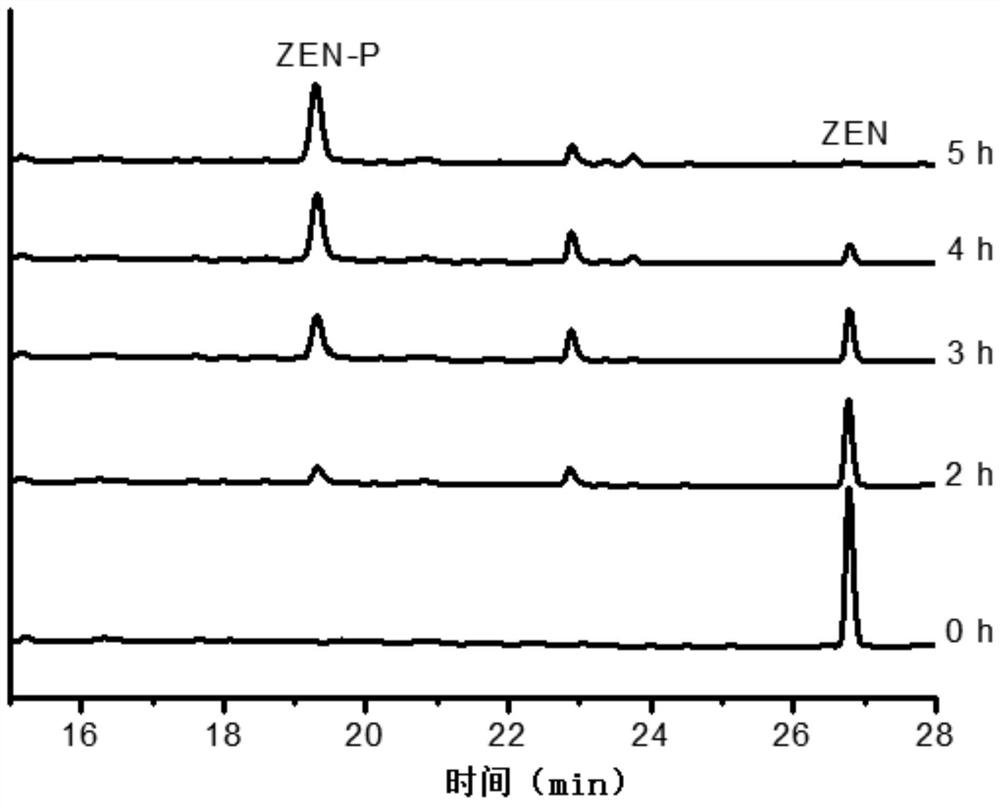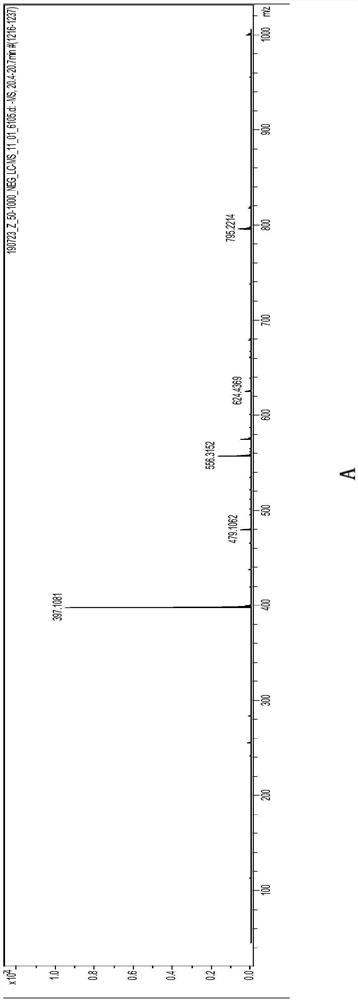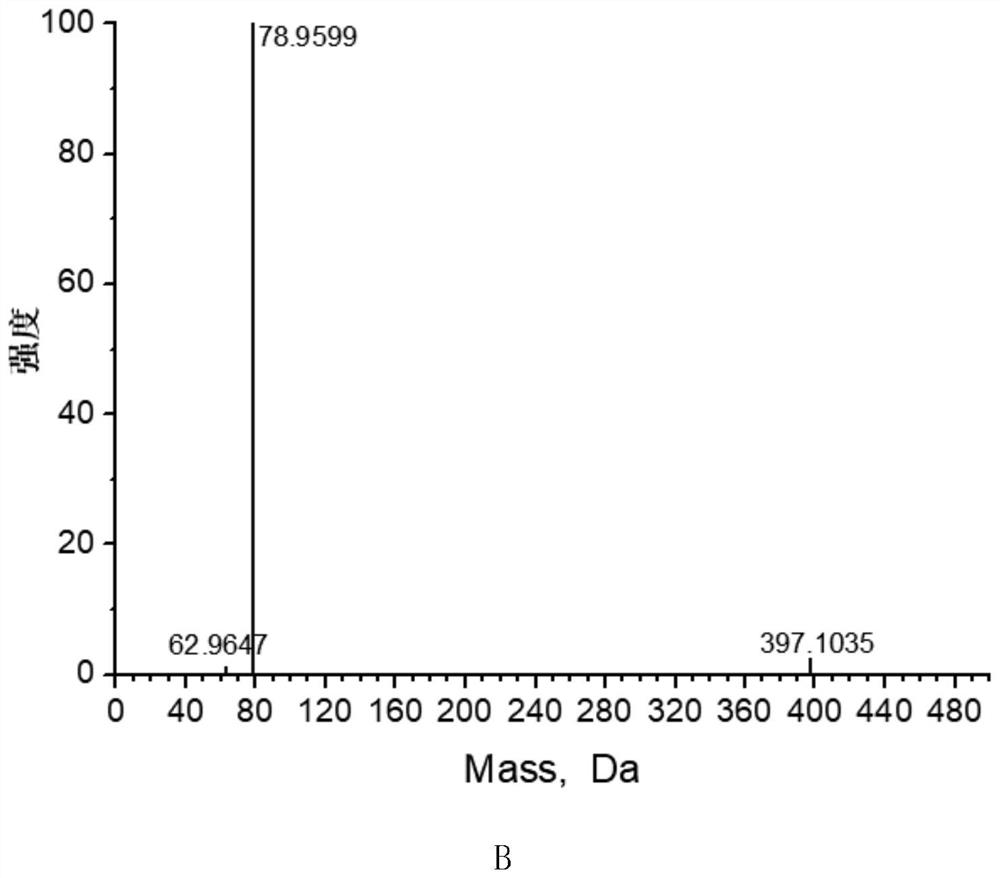Bacillus subtilis and application thereof in degrading zearalenone
A Bacillus subtilis, zearalenone technology, applied in the direction of bacteria, microorganism-based methods, microorganisms, etc., can solve problems such as the inability to detect or determine the transformation of zearalenone or the toxicity of degradation products, so as to improve animal husbandry. Industrial economic benefits, low production and use costs, and bacterial strain safety effects
- Summary
- Abstract
- Description
- Claims
- Application Information
AI Technical Summary
Problems solved by technology
Method used
Image
Examples
Embodiment 1
[0061] Example 1. Isolation, Identification and Preservation of Bacillus subtilis 816 CGMCC No.14854
[0062] 1. Isolation of zearalenone-degrading bacteria 816
[0063] 1. Add 1g of soil sample (collected from the corn field in Chifeng City, Inner Mongolia Autonomous Region, China) to a shaker flask (50mL) filled with 30mL LB liquid medium, mix well; then vibrate at 37°C and 180rpm for 12h to obtain cultured bacteria liquid.
[0064] 2. After completing step 1, use the 96-well plate as the culture carrier, take the culture liquid and adopt the enrichment culture method of 5 consecutive zearalenone toxin concentration gradients to obtain a bacterial suspension capable of degrading zearalenone.
[0065] 3. Take the bacterial suspension and dilute it with sterile water to obtain bacterial solutions with different dilutions. 0.1 mL of each dilution was evenly spread on the LB solid plate, and cultured overnight at 37°C.
[0066] 4. Inoculate colonies with good separation degre...
Embodiment 2
[0079] Example 2, Detection of the effect of Bacillus subtilis 816 on degrading zearalenone
[0080] 1. A single colony of Bacillus subtilis 816 was inoculated in 5 mL of LB liquid medium, and cultured at 37° C. and 180 rpm for 24 hours to obtain a seed solution.
[0081] 2. The seed liquid was inoculated into LB liquid medium containing 100 μg / mL zearalenone according to the inoculum amount of 10% (v / v) to obtain a culture system.
[0082] 3. Extract residual zearalenone in the culture system obtained in step 2 with methanol, and detect by HPLC.
[0083] 4. Take the culture system obtained in step 2, and culture it at 37° C. and 220 rpm for 2 hours, 3 hours, 4 hours or 5 hours to obtain a culture liquid. The residual zearalenone in the culture liquid was extracted with methanol, and detected by HPLC.
[0084] See the test results figure 1 . The results showed that Bacillus subtilis 816 could degrade zearalenone; when cultured for 5 hours, the degradation rate of zearalen...
Embodiment 3
[0085] Example 3, Detection of the conversion rate of Bacillus subtilis 816 to zearalenone at different temperatures
[0086] The concentration of ZEN in the ZEN toxin stock solution was 1 mg / mL, and the solvent was methanol.
[0087] 1. A single colony of Bacillus subtilis 816 was inoculated in 5 mL of LB liquid medium, and cultured at 37° C. and 200 rpm for 24 hours to obtain a seed liquid.
[0088] 2. The seed liquid was inoculated into 5 mL LB liquid culture medium according to the inoculum amount of 1% (v / v), and cultured at 37° C. and 200 rpm for 24 hours to obtain a fermentation liquid.
[0089] 3. Thoroughly mix 2 mL of fermentation broth and 40 μl of ZEN toxin stock solution, and then culture at 10°C, 20°C, 30°C, 40°C, 50°C or 60°C for 2.5 hours at 200 rpm to obtain culture broth. The content of zearalenone in the culture broth was detected by HPLC.
[0090] The fermentation broth was replaced with LB liquid medium, and other steps were unchanged. as a blank contro...
PUM
 Login to View More
Login to View More Abstract
Description
Claims
Application Information
 Login to View More
Login to View More - R&D
- Intellectual Property
- Life Sciences
- Materials
- Tech Scout
- Unparalleled Data Quality
- Higher Quality Content
- 60% Fewer Hallucinations
Browse by: Latest US Patents, China's latest patents, Technical Efficacy Thesaurus, Application Domain, Technology Topic, Popular Technical Reports.
© 2025 PatSnap. All rights reserved.Legal|Privacy policy|Modern Slavery Act Transparency Statement|Sitemap|About US| Contact US: help@patsnap.com



